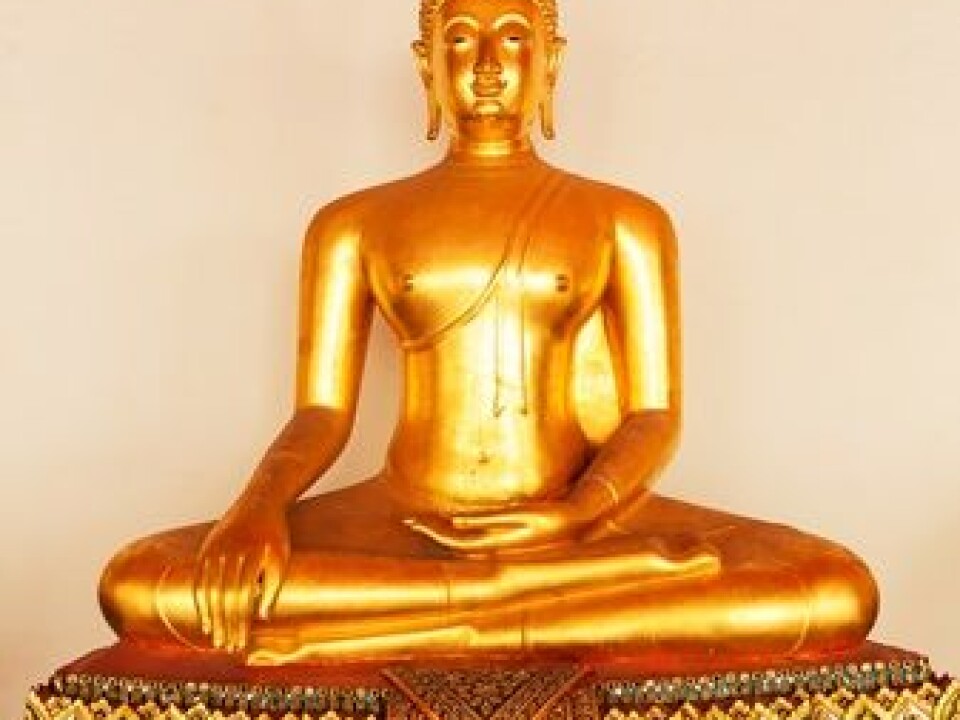An article from University of Oslo
An historical look at meditation
Nowadays, numerous people meditate without a religious purpose, but the word "meditation" does in fact come from Christianity.
Denne artikkelen er over ti år gammel og kan inneholde utdatert informasjon.
Meditation is practiced everywhere – with or without a religious purpose – and with a wealth of different techniques. It has been performed for several thousand years, and appears in all the major religions.
But what is meditation? What role does it play in various cultures? And how is it practiced in different parts of the world?
These are some of the questions addressed by Professor Halvor Eifring at the Department of Culture Studies and Oriental Languages at the University of Oslo.
“There are numerous forms of meditation," Eifring tells.

"Historically, meditation practices have been far more diverse than those we are currently familiar with. Acem, Zen and mindfulness are just the top of the iceberg.”
Holistic understanding of meditation
The professor is the editor of three books on meditation.
The first, about Eastern Asiatic meditation techniques, was published in Chinese in 2012. Book number two is about meditation in Judaism, Christianity and Islam. The third book addresses meditation practices in Hinduism, Buddhism and Taoism.
“Gathering texts on different traditions in one volume gives us a wider perspective and a more holistic understanding of what meditation is and how it is practised,” he says.
Western vs Asiatic meditation

According to Eifring, a rough division can be made between Western and Asiatic meditation traditions.
“While the Western form of meditation has traditionally been based on content, technical forms of meditation are far more widespread in Asia."
A typical example of a content-based form of meditation is the recitation of prayers or scripture. It can also be the visualization of specific episodes or incidents – like a story from sacred scripture, the death of Christ or one’s own death.
“Such meditation practices have been used in Christianity, Judaism and Islam. There are similar forms of meditation in the Asiatic tradition, but these often emphasize a technical tradition as well,” says the professor.
“The technical tradition can also be based on either recitation or visualization. But typically this form of meditation tends to involve reciting sounds without content or visualizing things like geometrical figures.”
Western religions place more emphasis on God
Technical forms of meditation can also be more physical and focus on breathing techniques and movements – as in yoga. It can also involve specific ways of focusing one’s attention, such as including and accepting all impressions.
Eifring thinks that one of the reasons for the difference between Asiatic and Western meditation is that the Western religions place far more emphasis on a personal relationship with God.
“This personal relationship is not as important in Asiatic meditation. The religious element is not only reflected in the individual’s relationship with God or the Gods, it is also part of a greater whole. This may have resulted in a greater freedom in regards to how religious practices are to be carried out.”
Strong bonds with religion
Nobody quite knows when meditation first came into being. But in Indian sources, meditation is described from around 600 BCE. In both the West and in China, meditation is portrayed a few hundred years later.
“Traditionally, meditation is strongly connected to religion. Today it is also practised without a religious purpose, but the actual word ‘meditation’ does in fact come from Christianity,” Eifring says.
Meditation has nonetheless been controversial in many Western religions. And technical meditation techniques have been particularly looked down upon.
“Pope Johannes Paul II made his view clear when he stated that meditation is about communicating with God, rather than about techniques.”
Meditative traditions in Catholicism
Nevertheless, meditation features clearly in several Western religions.
“There are a number of meditative traditions in Catholicism. The same applies to Judaism. And it has been very prominent in for example Kabbala. Meditation is also widespread in Islam, not least in Sufism. But it does not have a prominent position in Protestantism,” Eifring tells.
“Martin Luther used the term ‘meditation’, but primarily to describe a form of thought,” he adds.
Traditionally, meditation has had a stronger position in religions such as Buddhism, Taoism and Hinduism than it has in Western religions.
“In Buddhism, meditation is a symbol of the religion – Buddha is almost always portrayed in a meditating pose,” Eifring points out.
Asiatic meditation on the rise
Western meditation practices have changed drastically since the 1960s, according to Eifring. They have been taken out of their original religious context – thereby becoming less content-based.
Asian-inspired meditation practices that focus on mental techniques are increasingly common. Simultaneously, meditation has become more widespread in the West.
“The fact that meditation is no longer necessarily connected to religion has made it easier for people to practice meditation,” the professor concludes.
References:
- Halvor Eifring (editor): Meditation in Judaism, Christianity and Islam: Cultural Histories. Bloomsbury Academic. 2013.
- Halvor Eifring (editor): Hindu, Buddhist and Daoist Meditation: Cultural Histories. Hermes. 2014.
------------
Read the Norwegian version of this article at forskning.no

































